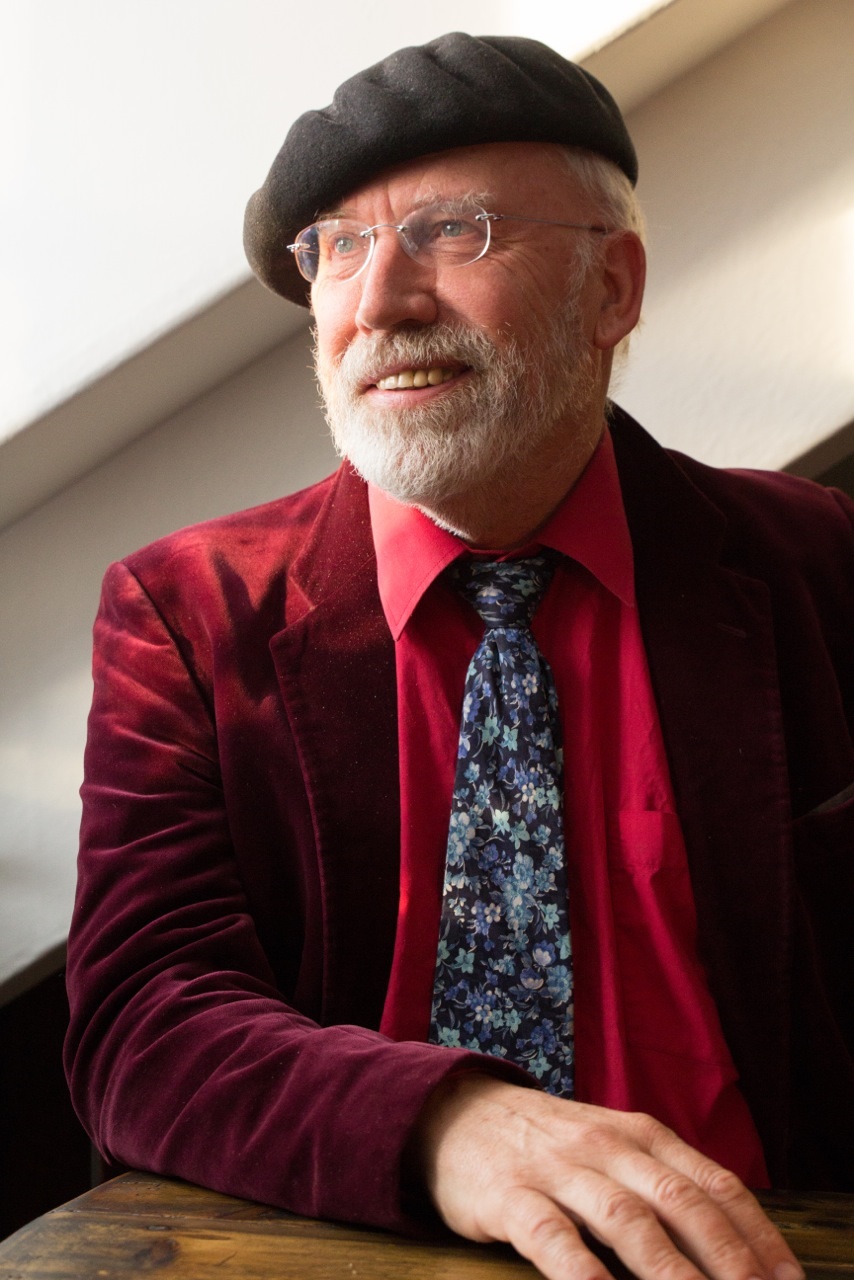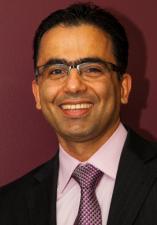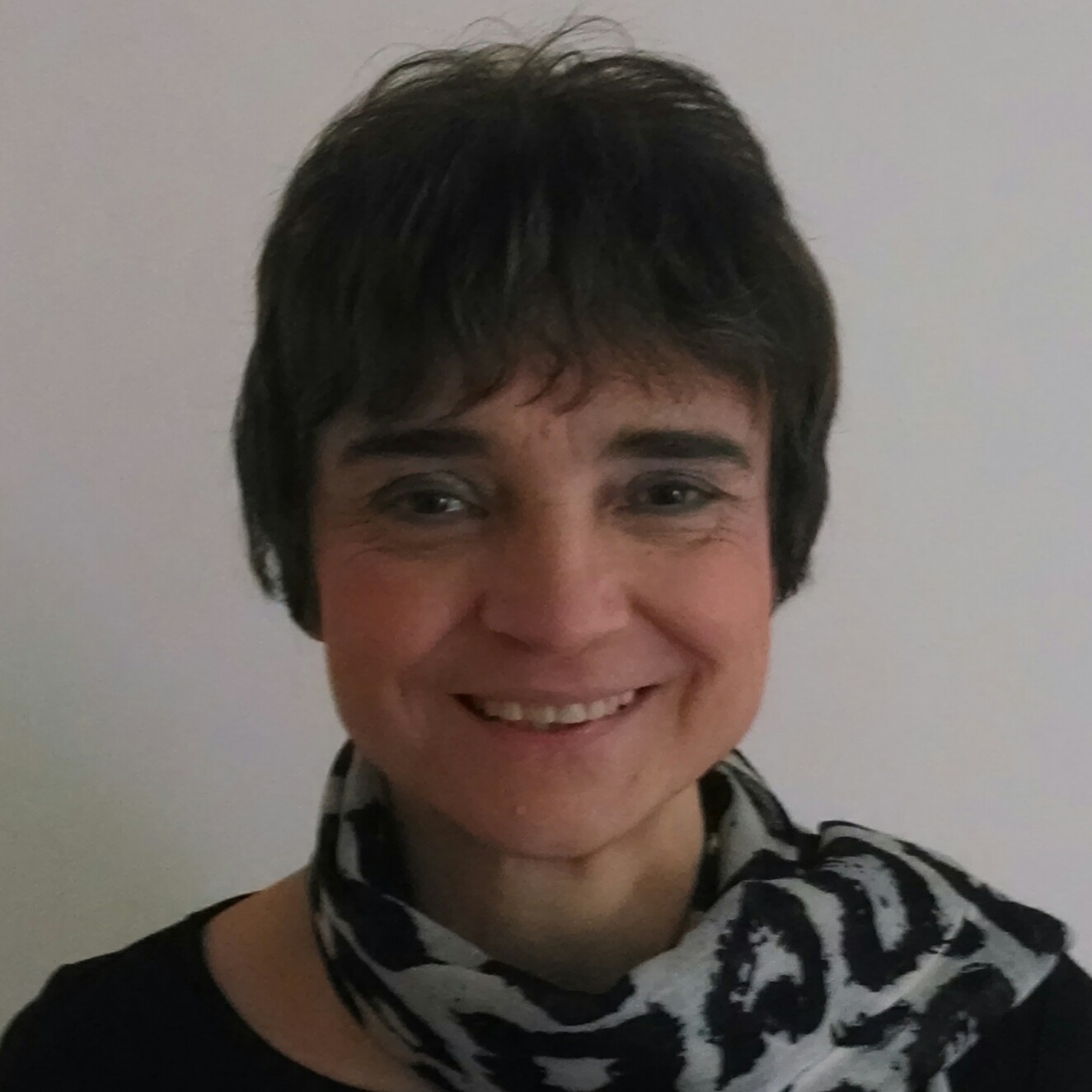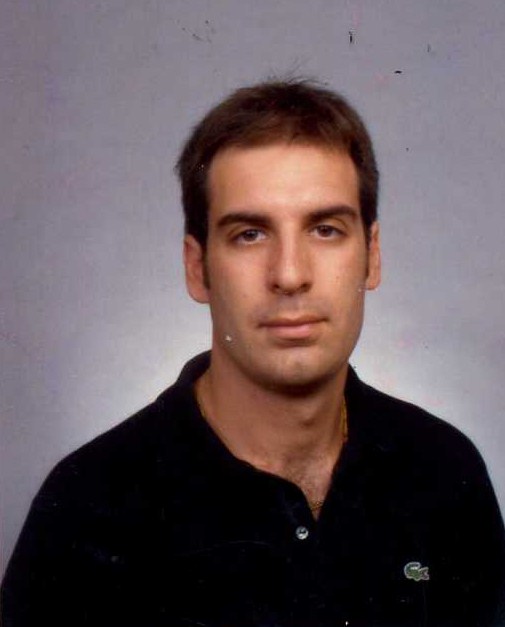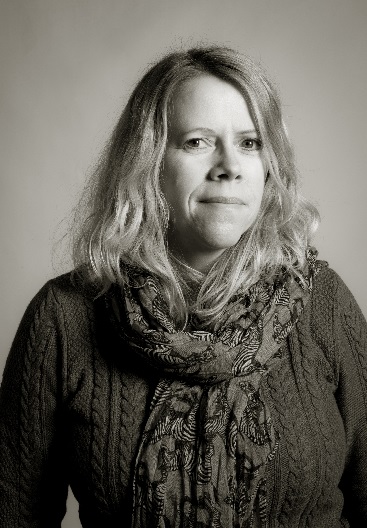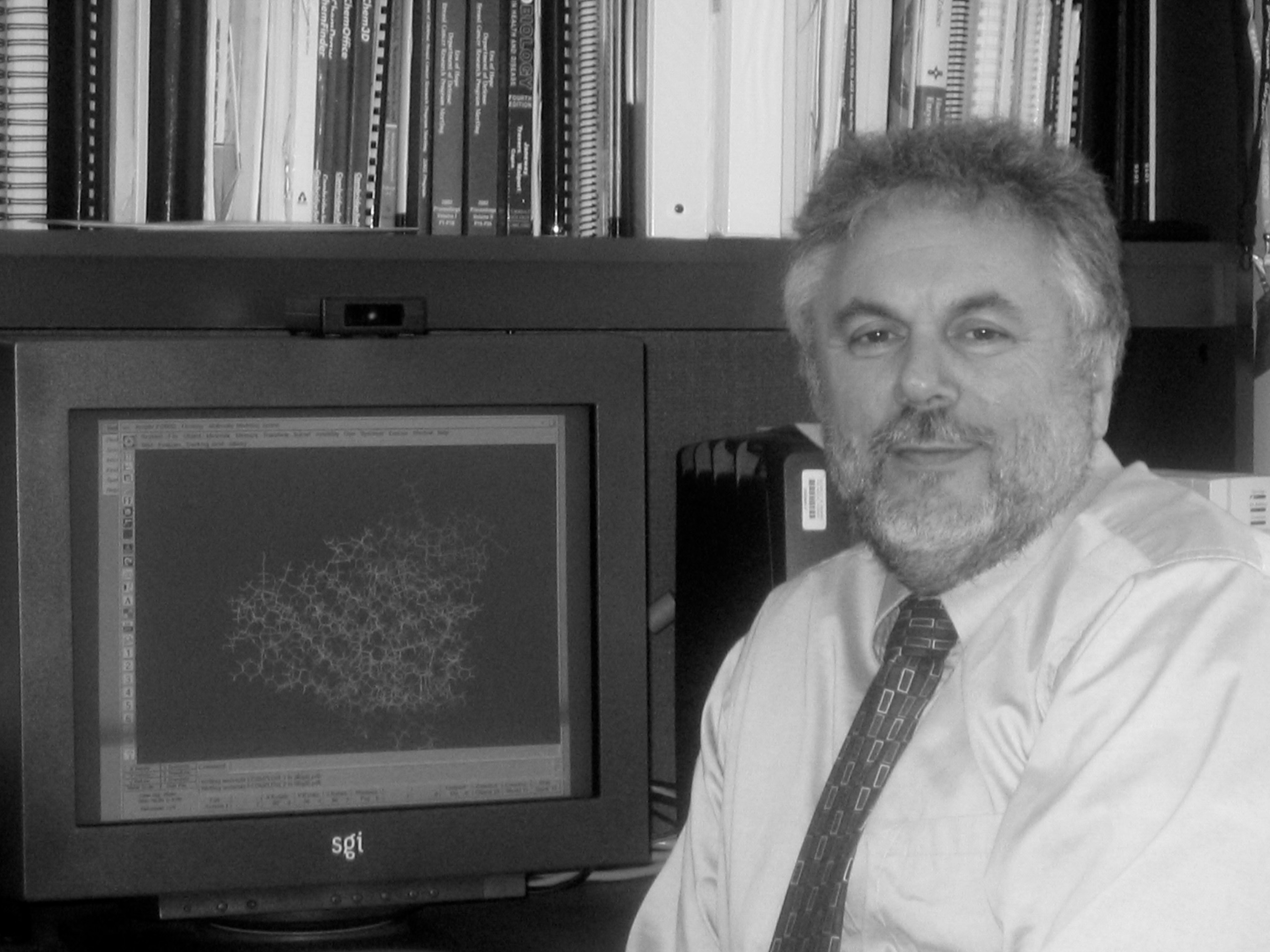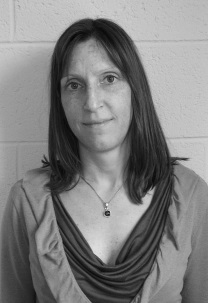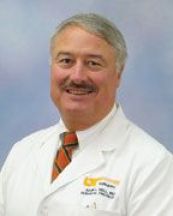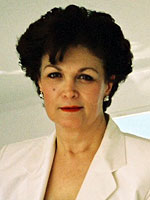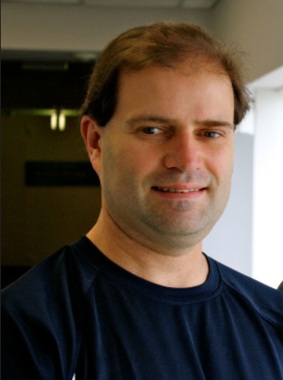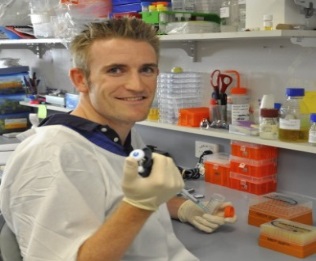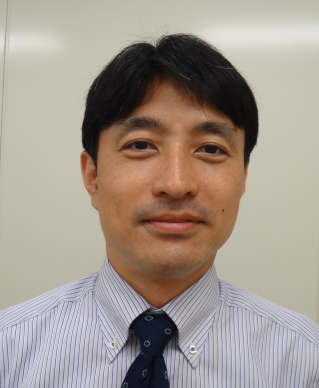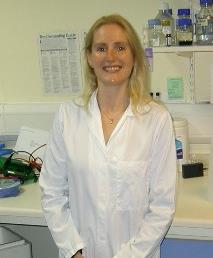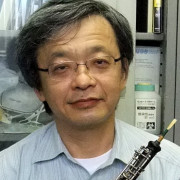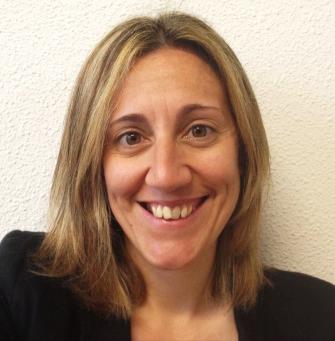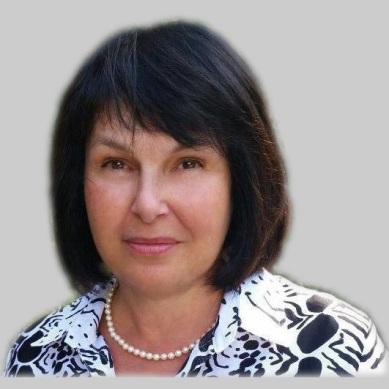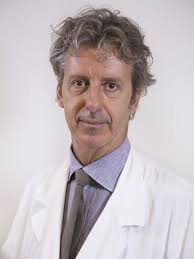Theme: New Discoveries for Better Diagnosis and Treatments for Breast Cancer and to bring Awareness
Breast Cancer-2015
OMICS Group Conferences feel proud to organize "World Congress on Breast Cancer" (Breast Cancer-2015) August 03-05, 2015 Birmingham, UK. We welcome and invite you to participate in this prestigious conference.
Breast Cancer is the most common cause of death in women. The scientific sessions of the Breast Cancer conference housing all the current research in breast cancer research. Breast Cancer-2015 is designed to offer comprehensive range of sessions that includes; breaking systems in the diagnosis of breast cancer are Mammograms, breast cancer screenings and genomic tests; Current methods and Controversies for Breast Cancer Treatment: Novel discoveries in breast cancer treatments and latest developments in patient care. The main objective of Breast Cancer-2015 is to more targeted therapy for the treatment of advanced breast cancer and also will most likely to reduce the use of chemotherapy treatment, special drugs will continue to developed that attack special targeted breast cancer cells.
OMICS International Organises 300+ Conferences Every Year across USA, Europe & Asia with support from 1000 more scientific societies and Publishes 400+ Open access journals which contains over 30000 eminent personalities, reputed scientists as editorial board members. For More....
Track 1: Biology of Breast Cancer
Breast cancer is the second most common cause of death from cancer in women after lung cancer. The lifetime risk of being diagnosed with breast cancer is 1 in 5 for women in the globe. In the UK in 2011 around 49,900 women were diagnosed with breast cancer, that’s more than 130 women every day. Around 350 men in the UK were diagnosed with breast cancer in 2011. Female breast cancer incidence rates in Great Britain have increased by 72% since the mid-1970s. In Europe, more than 464,000 new cases of breast cancer were estimated to have been diagnosed in 2012. The UK incidence rate is sixth highest in Europe. Worldwide, it is estimated that more than 1.68 million women were diagnosed with breast cancer in 2012, with incidence rates varying across the world. The research on breast cancer biology has been increased from 2002 to 2014 and total numbers of universities are around 42 in worldwide.
Breast Cancer is the most common cause of death in women. We first need to understand how cancer develops in the body for reducing breast cancer risk. What is cancer and how it develops can help us find ways to slow down its progress or perhaps stop it from occurring in the first place. Current understanding of the biology of breast cancer is very important and its relevance to treating and preventing the disease. Breast cancer is not a one disease. For example, understanding that breast tissue of girls and young women is especially sensitive to cancer causing agents can help direct risk reduction efforts to these groups. Making sense of cancer denotes taking a step toward more apprised decisions about our bodies, ourselves and our environment.
Breast cancer knowledge and Characteristics gives the information of what is breast cancer, it helps to have some basic knowledge about the normal structure of the breasts and how it comes and what are the its characteristics. Breast Cancer develops through different stages. These stages may or may not eventually lead to metastatic and invasive cancer. In most cases it takes many years for cancer to develop. Early detection of any cancer is important because it increases the chances of removing the cancer before it becomes life-threatening. The Signs, symptoms and stages of Breast Cancer are also very important for curing the disease.
A risk factor is anything that affects your chance of getting a disease, such as cancer. But risk factors don't tell us everything. Having a risk factor, or even several, does not mean that you will get the disease. Most women who have one or more breast cancer risk factors never develop the disease, while many women with breast cancer have no apparent risk factors. The best weapon in the fight against breast cancer is the ability to stop the disease occurring in the first place. Breast cancer develops due to a combination of genetics, mutations, environmental and lifestyle factors. It is estimated that one in four breast cancers could be avoided by changing a range of lifestyle factors - for example, limiting alcohol intake, exercising more and maintaining a healthy bodyweight.
Track 2: Breast Cancer Tests: Screening, Diagnosis and Monitoring
Early detection of breast cancer is best way for fight breast cancer. Deaths from breast could be avoided if cancer screening rates increased among women at risk. In calendar year 2013, the NBCCEDP—Screened 331,313 women for breast cancer with mammography and diagnosed 5,977 breast cancers. The mission of the Avon Foundation for Women Breast Health Outreach Program (BHOP) is to link medically underserved women to breast health education and screening services. Low-income, under-insured, and other marginalized populations often need targeted, customized approaches to help them obtain regular mammograms and clinical breast exams. Avon BHOP is funding 52 community outreach and breast cancer screening programs nationwide in 2015. Most of the countries spending money on conducting screening tests for breast cancer and most of the women’s are actively participating in screening programs. For example, Total number of women screened in FY2009/10 in the UK was nearly 2,020,000. In 2012, 1.7 million women were diagnosed with breast cancer and there were 6.3 million women alive who had been diagnosed with breast cancer in the previous five years. Since the 2008 estimates, breast cancer incidence has increased by more than 20%, while mortality has increased by 14%. Breast cancer is also the most common cause of cancer death among women (522 000 deaths in 2012) and the most frequently diagnosed cancer among women in 140 of 184 countries worldwide.
Survival is much higher when you pick up cancer in the early stages rather than the late stages. Performing screening is an effort to pick up breast cancer before there are any symptoms, so screening is the only for women who are not experiencing any kind of breast problems. The goal of screening exams for breast cancer is to identify cancers before they start to cause any symptoms. Early detection means using an approach or test that lets breast cancer get diagnosed earlier than otherwise might have occurred. Learning about Screening Tests and Diagnostic Tools for breast cancer is very important to kill the breast cancer in early stages. There are a number of ways to check for breast cancer. Some tests are basic; some are more invasive but provide more information. But all are vital to help detect this breast cancer disease in early.
Mammography is one of the most common screening test for breast cancer. A diagnostic mammogram is used to find breast disease in women who have breast symptoms or an abnormal result on a screening mammogram. Screening mammograms are used to look for breast disease in women who are asymptomatic; that is, those who appear to have no breast problems. The other types of screening and diagnostic tests are Biopsy, Sentinel node biopsy, Breast MRI and Breast Ultrasound.
The different breast cancer screening guidelines based on four distinct risk categories: women of moderate risk; women with at least one first-degree relative (i.e., parent or sibling) affected by breast cancer; women who have received a diagnosis of atypical hyperplasia (a form of benign breast disease) or lobular carcinoma in situ (cancers that are confined to the milk duct or lobule); and women with a history of mantle radiation (radiation received during treatment for Hodgkin disease).
Track 3: HER2 Positive and Other Types of Breast Cancers
In about 1 of every 5 breast cancers, the cancer cells have a gene mutation that makes an excess of the HER2 protein. HER2-positive breast cancers tend to be more aggressive than other types of breast cancer. Breast Cancer Campaign only funds research into breast cancer and will support research at any center of excellence in the UK and the Republic of Ireland. The charity has a particular interest in supporting innovative research and will fund the best breast cancer research in the UK and Ireland, providing that it scientifically excellent, as judged by peer review. NCI’s investment2 in breast cancer research was $559.2 million in fiscal year (FY) 2013. In addition to the funding described in the graph, NCI supported $112.4 million in breast cancer research in FYs 2009 and 2010 using funding from the American Recovery and Reinvestment Act.
Breast cancer can be divided into different types based on the way the cancer cells look under the microscope. Breast cancer can begin or start in different areas of the breast —the lobules, the ducts or in some cases, in between the tissue. In this section, you can learn about the different types of breast cancer, including invasive, non-invasive, recurrent, triple negative and metastatic breast cancers.
Inflammatory breast cancer (IBC) is a aggressive and rare form of breast cancer. According to the National Cancer Institute, about 1-5% of all breast cancer cases are inflammatory breast cancers in the United States. Inflammatory breast cancer usually starts with the reddening and swelling of the breast instead of a certain lumps. IBC tends to grow and spread quickly, with symptoms worsening within days or even hours. It’s important to recognize symptoms and seek prompt treatment. Although inflammatory breast cancer is a provoking diagnosis, keep in mind that treatments today are better at controlling the disease than in previous days.
Male Breast Cancer is a very rare disease. Male breast cancer is less than 1% of all breast cancers occur in men. In 2014, about 2,360 men are expected to be diagnosed with the disease. For men, the lifetime risk of being diagnosed with breast cancer is about 1 in 1,000. You may be thinking: Men don't have breasts, so how can they get breast cancer? The truth is that boys and girls, men and women all have breast tissue. The various hormones in girls' and women's bodies stimulate the breast tissue to grow into full breasts. Boys' and men's bodies normally don't make much of the breast-stimulating hormones. As a result, their breast tissue usually stays flat and small. Still, you may have seen boys and men with medium-sized or big breasts.
Invasive lobular carcinoma (ILC) or infiltrating lobular carcinoma, is the second most common type of breast cancer after invasive ductal carcinoma (cancer that begins in the milk-carrying ducts and spreads beyond it). About 10% of all invasive breast cancers are invasive lobular carcinomas and it’s about 80% are invasive ductal carcinomas. Invasive means that the cancer has “invaded” or spread to the surrounding breast tissues. Lobular means that the cancer began in the milk-producing lobules, which empty out into the ducts that carry milk to the nipple. Carcinoma refers to any cancer that begins in the skin or other tissues that cover internal organs — such as breast tissue. All together, “invasive lobular carcinoma” refers to cancer that has broken through the wall of the lobule and start to invade the tissues of the breast. Over time, invasive lobular carcinoma can spread to the lymph nodes and possibly to spread to other areas of the body.
Paget disease of the nipple is one rare type of breast cancer starts in the breast ducts and spreads to the skin of the nipple and then to the areola, the dark circle around the nipple. It is rare and accounting for only about 1% of all cases of breast cancer. The skin of the nipple and areola often appears scaly, crusted, and red, with areas of bleeding or oozing. The woman may notice burning or itching. Phyllodes tumor is very rare breast tumor develops in the stroma or connective tissue of the breast, in contrast to carcinomas, which grows in the ducts or lobules. The other names for these tumors include cystosarcoma phyllodes and phylloides tumor. These tumors are usually benign but on rare occasions may be malignant. Benign phyllodes tumors are treated by removing the tumor along with a margin of normal breast tissue. A malignant phyllodes tumor is treated by removing it along with a wider margin of normal tissue, or by mastectomy.
Track 4: Breast Cancer Therapy
More than $10 million has been given to fund research specifically into breast cancer. In addition, more than $14.5 million has been spent on research projects looking into the detection and treatment of all tumour types (including breast). Overall, Cancer Council Victoria has funded $46 million worth of extramural research since 2003. In 2012, 1.7 million women were diagnosed with breast cancer and there were 6.3 million women alive who had been diagnosed with breast cancer in the previous five years. Since the 2008 estimates, breast cancer incidence has increased by more than 20%, while mortality has increased by 14%. Breast cancer is also the most common cause of cancer death among women (522 000 deaths in 2012) and the most frequently diagnosed cancer among women in 140 of 184 countries worldwide. It now represents one in four of all cancers in women.
Estrogen therapy (ET) increases the estrogen level in your body. Estrogen impacts multiple systems of the body. Estrogen therapy (ET) is used to increase estrogen levels in postmenopausal women who have no uterus. This treatment may help prevent perimenopausal symptoms, osteoporosis, and colon cancer. Women in their 20s, 30s, and 40s who experience early menopause after having their ovaries removed (oophorectomy) or because of other medical reasons typically take ET to reduce their risk of early bone loss and osteoporosis. Historically, women have continued using ET for years beyond menopause. Women with a uterus who take estrogen also need the hormone progestin to prevent the estrogen from overgrowing the uterine lining, which can lead to endometrial (uterine) cancer. Estrogen-progestin is called hormone therapy (HT).
Breast reconstruction:- Many women who have a mastectomy—surgery to remove an entire breast to treat or prevent breast cancer—have the option of having more surgery to rebuild the shape of the removed breast. Breast reconstruction surgery can be either immediate or delayed. With immediate reconstruction, a surgeon performs the first stage to rebuild the breast during the same operation as the mastectomy. A method called skin-sparing mastectomy may be used to save enough breast skin to cover the reconstruction. Breasts can be rebuilt using implants (saline or silicone) or autologous tissue (that is, tissue from elsewhere in the body). Most breast reconstructions performed today are immediate reconstructions with implants.
Track 6: Chemotherapy for Breast Cancer
Treatments given to weaken and destroy breast cancer before surgery are called neoadjuvant treatments. Most neoadjuvant treatments involve one or more chemotherapy medicines. Targeted therapy medicines, hormonal therapy, or radiation therapy also can be used as neoadjuvant treatments. The researchers looked at records in the National Cancer Data Base, a database that is maintained by the American Cancer Society and the American College of Surgeons’ Commission on Cancer. Breast cancer market to grow to over $13 billion by 2020. The database includes information on about 80% of the cancers diagnosed in the United States. Between 2006 and 2011, the researchers found that 354,204 women had been diagnosed with stage I to stage III breast cancer and treated with surgery and chemotherapy: 59,063 of the women had chemotherapy before surgery and 295,141 had chemotherapy after surgery. In the US, five-year relative survival rates have improved from 63% in the early 1960s to 90% in recent years, while in England, rates for women diagnosed with BC in 2001-2006 reached 82%, compared to 52% 1971-1975. This report estimates that sales of leading brands achieved sales of US$12.7 billion in 2010, with growth due to expanding sales for a number of existing treatments rather than the launch of new products. Sales were split between chemotherapies, hormonal therapies and novel molecular targeted therapies, with the majority of these agents used in combination.
Chemotherapy treatment uses medicine to weaken and destroy cancer cells in the body, including cells at the original cancer site and any cancer cells that may have spread to another part of the body. There are quite a few chemotherapy medicines. In many cases, a combination of two or more medicines will be used as chemotherapy treatment for breast cancer. Chemotherapy is used to treat early-stage invasive breast cancer to get rid of any cancer cells that may be left behind after surgery and to reduce the risk of the cancer coming back; advanced-stage breast cancer to destroy or damage the cancer cells as much as possible. Chemotherapy medicines prevent cancer cells from growing and spreading by destroying the cells or stopping them from dividing.
Adjuvant therapy for breast cancer is any treatment given after primary therapy to increase the chance of long-term disease-free survival. Primary therapy is the main treatment used to reduce or eliminate the cancer. Not all women with breast cancer need adjuvant therapy. Patients at higher risk of cancer recurrence are more likely to need adjuvant therapy. Doctors look at both prognostic and predictive factors to decide which patients might benefit from adjuvant treatments. Prognostic factors help doctors estimate how likely a tumor is to recur. Predictive factors help doctors estimate how likely cancer cells are to respond to a particular treatment. Even in early-stage breast cancer, cells may break away from the primary tumor and spread to other parts of the body (metastasize). Therefore, doctors give adjuvant therapy to kill any cancer cells that may have spread, even if they cannot be detected by imaging or laboratory tests. Studies have shown that adjuvant therapy for breast cancer may increase the chance of long-term survival by preventing a recurrence.
Neoadjuvant therapy is treatment given before primary therapy. A woman may receive neoadjuvant chemotherapy for breast cancer to shrink a tumor that is inoperable in its current state, so it can be surgically removed. A woman whose tumor can be removed by mastectomy may instead receive neoadjuvant therapy to shrink the tumor enough to allow breast-conserving surgery. Neoadjuvant chemotherapy is given in the same manner as adjuvant chemotherapy. If a tumor does not respond (shrink) or continues to grow during neoadjuvant chemotherapy, the doctor may stop treatment and try another type of chemotherapy or perform surgery instead, depending on the stage of the cancer. Clinical trials are examining whether hormonal therapy or trastuzumab is effective when given before surgery.
Track 7: Breast Cancer Immunotherapy & Radiation Therapy
More than $10 million has been given to fund research specifically into breast cancer. In addition, more than $14.5 million has been spent on research projects looking into the detection and treatment of all tumour types (including breast). Overall, Cancer Council Victoria has funded $46 million worth of extramural research since 2003. In 2012, 1.7 million women were diagnosed with breast cancer and there were 6.3 million women alive who had been diagnosed with breast cancer in the previous five years. Since the 2008 estimates, breast cancer incidence has increased by more than 20%, while mortality has increased by 14%. Breast cancer is also the most common cause of cancer death among women (522 000 deaths in 2012) and the most frequently diagnosed cancer among women in 140 of 184 countries worldwide. It now represents one in four of all cancers in women.
Although breast cancer has historically been considered immunologically silent, several preclinical and clinical studies suggest that immunotherapy has the potential to improve clinical outcomes for patients with breast cancer. Overall, immunotherapy holds several key advantages over conventional chemotherapeutic and targeted treatments directed at the tumor itself. The common types of immunotherapy include Monoclonal antibodies, Cancer vaccines and Non-specific immunotherapies. One common type of breast cancer immunotherapy drug for breast cancer is Herceptin. This drug binds with specific proteins on breast cancer cells to slow or stop their growth. Your care team may recommend Herceptin to target breast tumors that produce too much of (or overexpress) a protein called HER2, which can also signal more aggressive cancers. Immunotherapy is a promising treatment for breast cancer, including advanced and recurrent forms of the disease. Immunotherapy may be used alone or in conjunction with other breast cancer treatments, such as radiation therapy and chemotherapy.
Radiation therapy is treatment with high-energy rays or particles that destroy cancer cells. Radiation to the breast is often given after breast-conserving surgery to help lower the chance that the cancer will come back in the breast or nearby lymph nodes. Radiation may also be recommended after mastectomy in patients either with a cancer larger than 5 cm, or when cancer is found in the lymph nodes. Radiation therapy uses a special kind of high-energy beam to damage cancer cells. (Other types of energy beams include light and X-rays.) These high-energy beams, which are invisible to the human eye, damage a cell’s DNA, the material that cells use to divide. Radiation is an important and often necessary form of anti-cancer therapy because it is able to reduce the risk of recurrence after surgery. Many patients are surprised to discover that having radiation therapy is less difficult than they expected, though the radiation used to damage cancer in your body can also damage healthy cells.
How Radiation Works?? Radiation therapy uses a special kind of high-energy beam to damage cancer cells. (Other types of energy beams include light and X-rays.) These high-energy beams, which are invisible to the human eye, damage a cell’s DNA, the material that cells use to divide. Over time, the radiation damages cells that are in the path of its beam — normal cells as well as cancer cells. But radiation affects cancer cells more than normal cells. Cancer cells are very busy growing and multiplying — 2 activities that can be slowed or stopped by radiation damage. And because cancer cells are less organized than healthy cells, it's harder for them to repair the damage done by radiation. So cancer cells are more easily destroyed by radiation, while healthy, normal cells are better able to repair themselves and survive the treatment.
When Is Radiation Appropriate?? Radiation therapy has an important role in treating all stages of breast cancer because it is so effective and relatively safe. It may be appropriate for people with stage 0 through stage III breast cancer after lumpectomy or mastectomy. Radiation can also be very helpful to people with stage IV cancer that has spread to other parts of the body. Women who are pregnant should not have radiation. Radiation is never safe during pregnancy.
Types of Radiation Therapy:- There are three main types of radiation which are External Radiation, Internal Radiation and Intraoperative Radiation. External radiation is the most common type of radiation, typically given after lumpectomy and sometimes, mastectomy. In this section, you can read about how external radiation is given. Internal radiation is a less common method of giving radiation. It is being studied for use after lumpectomy. In this section, you can read about how radiation is delivered inside the breast. Another relatively new type of radiation to treat breast cancer is intraoperative radiation therapy (IORT). IORT is given during lumpectomy surgery after the cancer has been removed. In this section you can read about how intraoperative radiation therapy is given.
Track 7: Innovative Therapeutic Approaches in Breast Cancer
One in eight women will develop breast cancer over the course of her lifetime. Breast cancer death rates for women in the U.S. are higher than for any other cancer except lung cancer. There is a lot of progress that needs to be made in detection, diagnosis, and therapy—and plenty of money to be had for those who can make it. So when GE announced last year that it was launching a $100 million global open innovation challenge as part of its Healthymagination initiative, it came as no surprise to learn that breast cancer would be the first focus. Now GE has revealed the five winners of the first phase of the challenge, which asked entrants to submit solutions that advance breast cancer early detection and diagnostics with a focus on triple-negative breast cancer, which is typically more aggressive and less responsive to standard treatments than other forms of the disease. 25,000 to 30,000 patients each year are diagnosed with triple-negative breast cancer.
Breast Implants with Cancer-fighting and Healing Properties
70,000 women with breast cancer have mastectomies each year, but silicone breast implants have a 30% failure rate, with leakage and rupture occurring all too often. Researchers develop a new kind of implant, one made out of a rubber polymer that is significantly stronger than silicone. That would be impressive enough, but some researchers also hopes to put a coating embedded with chemotherapy drugs in the implant that could deliver targeted treatments to patients. That’s not as far out as it sounds; the Taxus Drug Eluting Stent, a drug-coated heart stent, is already FDA-approved.
Targeted Therapies is one of the innovative in breast cancer treatment. Several clinical trials led by physician-scientists at Mass General are revealing the power of new targeted anticancer therapies in breast cancer. Everolimus is a targeted therapy that works by zeroing in on the mTOR protein, which is regulated by the family of enzymes known as PI3 kinases (PI3K). In healthy cells, mTOR is involved in cell growth, cell proliferation, protein synthesis, and many other functions. In tumor cells, the mTOR pathway goes awry, leading to excess proliferation and a failure to respond to normal growth regulatory mechanisms. Everolimus in postmenopausal hormone-receptor-positive advanced breast cancer.
Surgery for Breast Cancer is really challenging to cure the breast cancer without any side effects. Lumpectomy is Surgery to remove the tumor along with some surrounding healthy tissue, leaving the margins (tissue bordering the tumor) free from cancer. Quadrantectomy is a breast-conserving surgery, this procedure removes one-fourth of the breast tissue. Mastectomy is a surgery to remove all the breast tissue. The most common type of mastectomy today is called a modified radical mastectomy, in which the breast tissue is removed but the muscles in the chest wall are spared, preserving arm strength. Lymphadenectomy is a surgery to remove one or more lymph nodes in the tumor area. Nodes are then examined for cancer by our pathology department. Oophorectomy is a removing the female ovaries to decrease hormone production. Plastic and Reconstructive Surgery are the surgeries to restore or improve the appearance of the breast. Some women choose to have reconstruction surgery at the time of a mastectomy; others defer a decision about reconstruction until a later time.
Track 9: Breast Cancer Treatment Side Effects
Breast cancer is the second most common cause of death from cancer in women after lung cancer. The lifetime risk of being diagnosed with breast cancer is 1 in 5 for women in the globe. In the UK in 2011 around 49,900 women were diagnosed with breast cancer, that’s more than 130 women every day. Around 350 men in the UK were diagnosed with breast cancer in 2011. Female breast cancer incidence rates in Great Britain have increased by 72% since the mid-1970s. In Europe, more than 464,000 new cases of breast cancer were estimated to have been diagnosed in 2012. The UK incidence rate is sixth highest in Europe. Worldwide, it is estimated that more than 1.68 million women were diagnosed with breast cancer in 2012, with incidence rates varying across the world. The research on breast cancer biology has been increased from 2002 to 2014 and total numbers of universities are around 42 in worldwide.
Some breast cancer treatments can cause temporary side effects that stop soon after treatment finishes. However, your treatment may also cause short or longer-term side effects. Chemotherapy and radiation for breast cancer destroy constantly dividing breast cancer cells. But these treatments can also affect healthy cells. Medications and other self-help methods can help ease many of these side effects: Loss of appetite, Nausea and vomiting, Weakness and fatigue, Mouth soreness, Hair loss, Weight gain, Premature menopause, Lowered resistance to infections, Bleeding and Diarrhea. This section looks at some of the physical and emotional effects of breast cancer and its treatments and gives practical information about coping with them.
Sexuality and Intimacy is the major side effect in breast cancer women. Many women find sex and intimacy difficult after a breast cancer diagnosis. A serious illness in either partner can disrupt a sexual and intimate relationship, but breast cancer can cause unique problems. For example, some treatments can cause pain and sensitivity, while others can lead to menopausal symptoms, such as vaginal dryness. You may feel your body has betrayed you. And, after months of treatment, you may feel detached or disconnected from the pleasure your body once gave you. Body image issues may also affect how you view sex, as well as your sexuality. Exercise has been shown to help improve sexuality and body image concerns among breast cancer survivors. And, some research findings suggest that cognitive behavioral therapy (a special type of mental health counseling that may also combine techniques such as relaxation exercises) may improve sexual functioning for breast cancer survivors.
Lymphedema is a potential side effect of breast cancer surgery and radiation therapy that can appear in some people during the months or even years after treatment ends. Lymph is a thin, clear fluid that circulates throughout the body to remove wastes, bacteria, and other substances from tissues. Edema is the buildup of excess fluid. So lymphedema occurs when too much lymph collects in any area of the body. If lymphedema develops in people who’ve been treated for breast cancer, it usually occurs in the arm and hand, but sometimes it affects the breast, underarm, chest, trunk, and/or back. Why does lymphedema happen? As part of their surgery, many people with breast cancer have at least two or three lymph nodes removed from under the arm (sentinel lymph node biopsy), and sometimes many more nodes (axillary lymph node dissection). If the cancer has spread, it has most likely moved into to those underarm lymph nodes first because they drain lymph from the breast. Many people also need radiation therapy to the chest area and/or underarm. Surgery and radiation can cut off or damage some of the nodes and vessels through which lymph moves. Although there’s no way to know for sure whether you’ll develop lymphedema after breast cancer, you can help yourself by learning more about it. Know your risk factors, take steps to reduce your risk, and be aware of early symptoms. Left untreated, lymphedema can worsen and cause severe swelling and permanent changes to the tissues under the skin, such as thickening and scarring. With care, lymphedema can often be avoided or, if it develops, kept under control. Injury or infection involving the affected arm or hand can contribute to the development of lymphedema or make existing lymphedema worse, so preventive measures should focus on protecting the arm and hand.
Lifestyle Changes after the breast cancer treatment. Breast cancer and its treatments can cause changes to your body and the way you look. For example, after surgery you’ll be left with a scar or scars. You may have lost your hair if you had chemotherapy. Many people also put on weight during or after treatment. Even though many of the effects of treatment can be temporary, they can still be very upsetting and have an important effect on how you see your body, not least because they can be an outward sign of having cancer. Most women have surgery as part of their treatment. For some women, surgery doesn’t affect how they feel about themselves, but many others find the changes more difficult to accept. Your confidence and self-esteem may be affected and you may feel unfeminine or unattractive. Some women feel lop-sided or incomplete. You may feel very self-conscious, for example if you’re in a communal changing room, particularly at first. Research has shown that the sooner you confront the physical changes to your body, the easier you may find it to gain confidence in the way you look. However, some people won’t have had the chance or courage to do this early on. It’s never too late, though.
Conference Highlights
- Biology of Breast Cancer
- Breast Cancer Tests: Screening, Diagnosis and Monitoring
- HER2 Positive and Other Types of Breast Cancers
- Breast Cancer Therapy
- Chemotherapy for Breast Cancer
- Breast Cancer Immunotherapy & Radiation Therapy
- Innovative Therapeutic Apporaches in Breast Cancer
- Breast Cancer Treatment Side Effects
- Optimal Breast Cancer Pathology – Organisation
To share your views and research, please click here to register for the Conference.
To Collaborate Scientific Professionals around the World
| Conference Date | August 03-05, 2015 | ||
| Sponsors & Exhibitors |
|
||
| Speaker Opportunity Closed | Day 1 | Day 2 | Day 3 |
| Poster Opportunity Closed | Click Here to View | ||
Useful Links
Special Issues
All accepted abstracts will be published in respective Our International Journals.
- Journal of Cancer Science & Therapy
- Journal of Carcinogenesis and Mutagenesis
- Chemotherapy: open access
Abstracts will be provided with Digital Object Identifier by



